“I was very angry. How can they do that? How is that possible in the United States that they can do this, put up a fence in front of our land, and then keep us in here? You know, lock us in?” — D’Ann Loop, American farmer and land owner beyond the border fence in Brownsville, TX
If there is one area along the 3145 km US-Mexico border where the complexity of building a border fence is evident, it is the area of Brownsville, Texas. Here, the border fence was built to comply with a law passed in 2006 and 2008 during the George W. Bush administration that authorized the construction of more than 1100 km of barrier, including 500 km in Texas.
Due to global warming and increased water demands from agriculture, maquiladoras, and households, the Rio Grande is slowly receding to lower and lower levels, making it easier to cross than in the past. The need for a stronger deterrent to drug smuggling and illegal immigration clashes with the 1970 Boundary Treaty: an agreement signed by both countries stipulating that neither side can place an obstruction in the Rio Grande floodplain – unless both countries sign off.
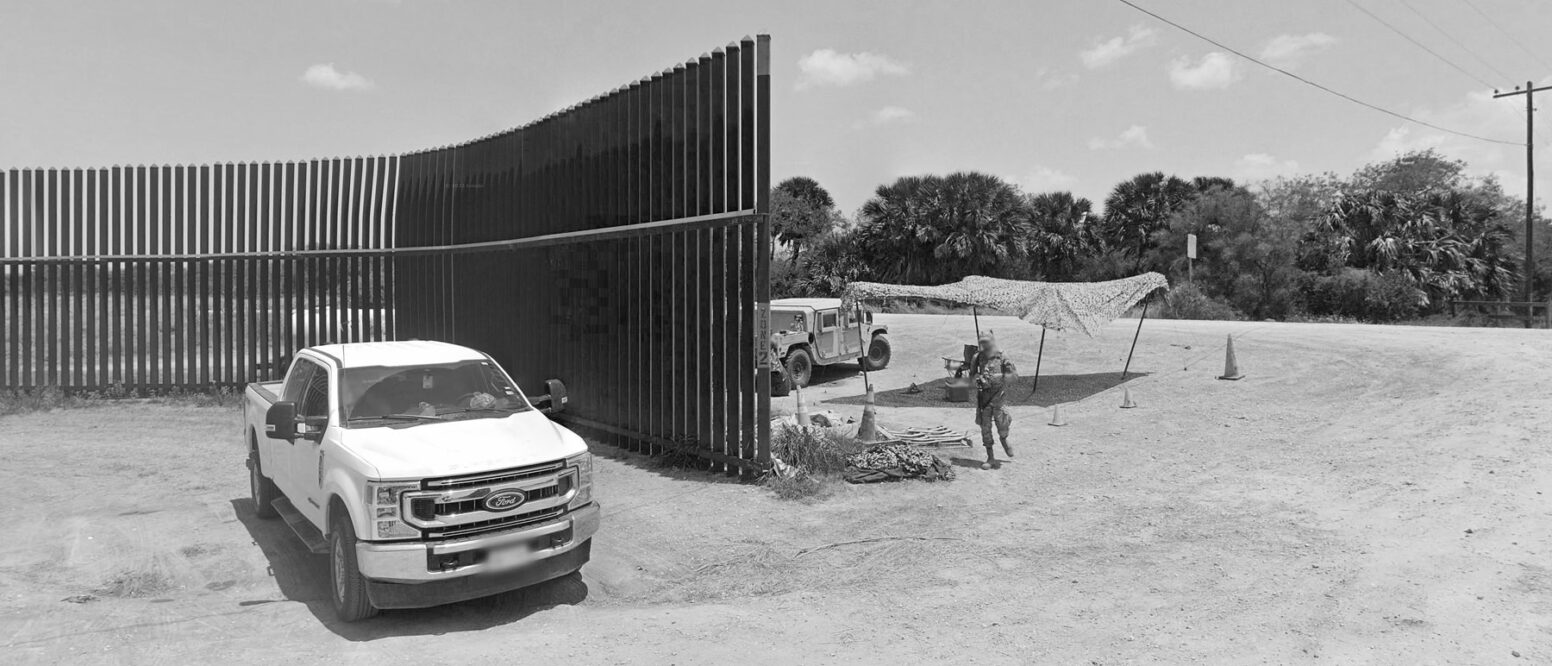
Brownsville, Texas (July 2023). Access to Sabal Palm Sanctuary, historical landmark and natural preserve.
Given the serpentine nature of the river in the Lower Rio Grande Valley, the US government inevitably sought to plan the construction of the border fence far from the northern riverbank, in an urban area with thousands of acres of private properties. So, the US Department of Homeland Security launched an aggressive campaign to seize private land. According to an investigation by ProPublica and The Texas Tribune, this campaign resulted in “unfair real estate deals, secretly waived legal safeguards for property owners, and ultimately […] [abuse of the] government’s extraordinary power to take land from private citizens.” Numerous landowners are still embroiled in legal battles. The government has already taken their land and erected the border barrier; however, compensation claims for its worth have yet to be settled.
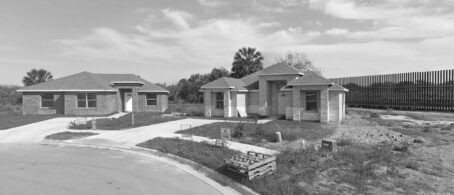
Brownsville, Texas (March 2023). New houses for sale by the border fence.
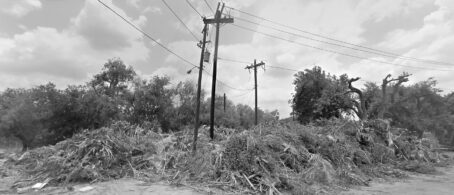
Brownsville, Texas (May 2011). Remnants of trees and vegetation on the side of the road.
Today there are houses, ranches, industrial sites, historical landmarks, and nature preserves that are paradoxically cut off from the rest of the neighborhood, in a netherworld south of the wall and north of the border marked by the Rio Grande. In order to guarantee access to landowners and residents, the barrier is riddled by dozens of openings and gates equipped with keypad and under constant video surveillance.
In June 2011, a drug cartel shootout occurred just across the Mexican border, in Matamoros. Several Border Patrol agents lined up on the north side of the fence, but did not venture beyond it. In such occasion, the owner of a golf course beyond the border fence had the impression that, in times of troubles, the Border Patrol would secure the fence rather than the actual border.
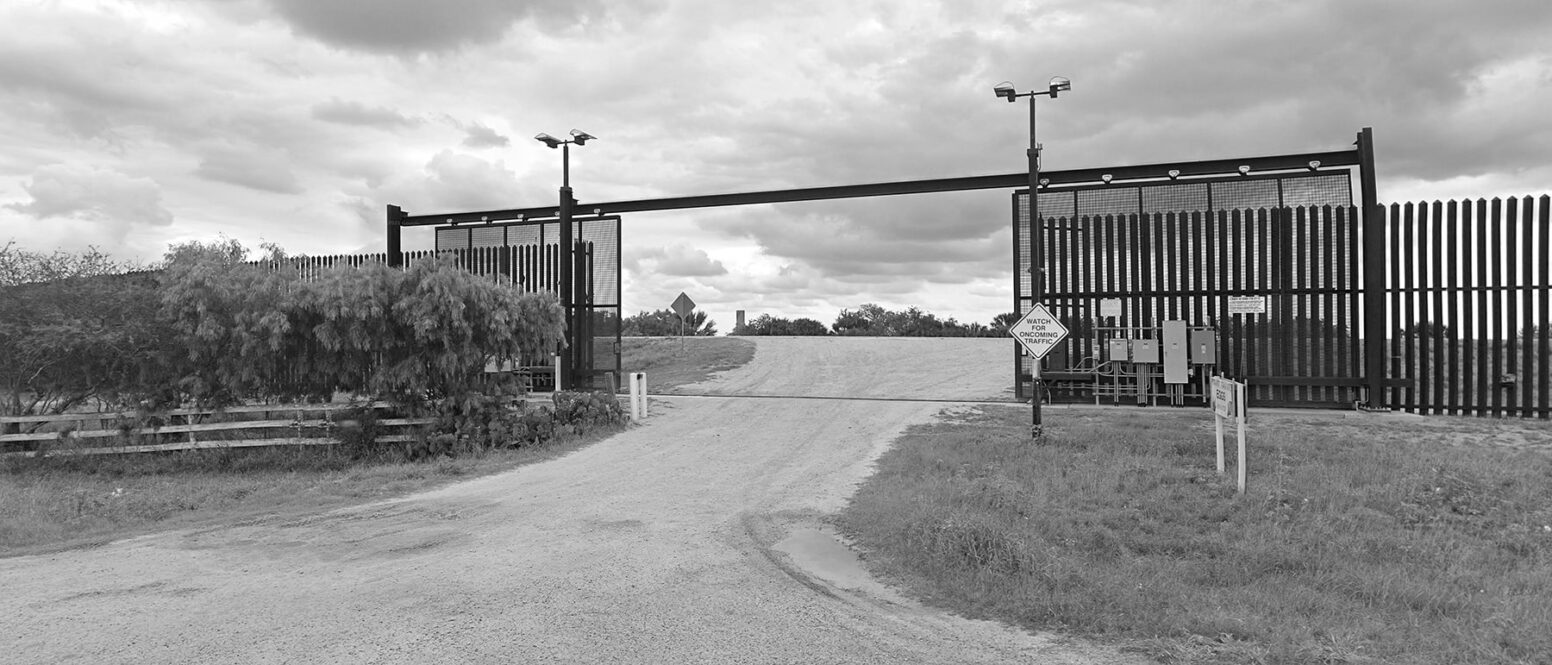
Brownsville, Texas (April 2021). Gate along the border fence.
In January 2017, a fire broke out on a ranch south of the border fence. Despite a timely call to 911, the response of the fire brigade was severely delayed by the border fence: the sirens of the fire engine could be heard for a long time as it drove back and forth along the road parallel to the border fence. By the time they arrived, it was too late to save anything.
Ironically, the presence of the border fence hardly makes any difference to immigrants. The mojados (also known as “wetbacks”: those who attempt crossing the river by swimming) do not have to breach the border fence to claim asylum, because they reach United States soil and gain that right as soon as they reach the northern riverbank.
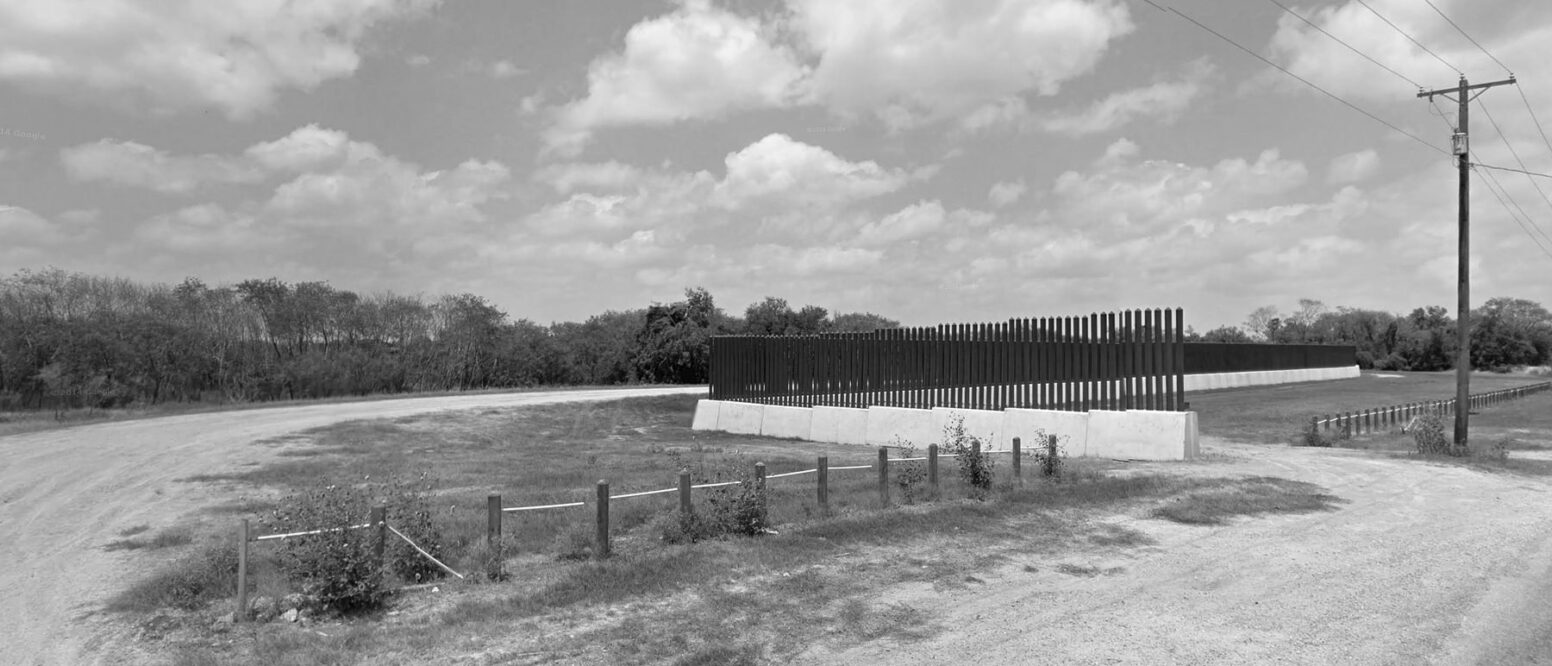
Brownsville, Texas (June 2011). Zigzag folds along the border fence.
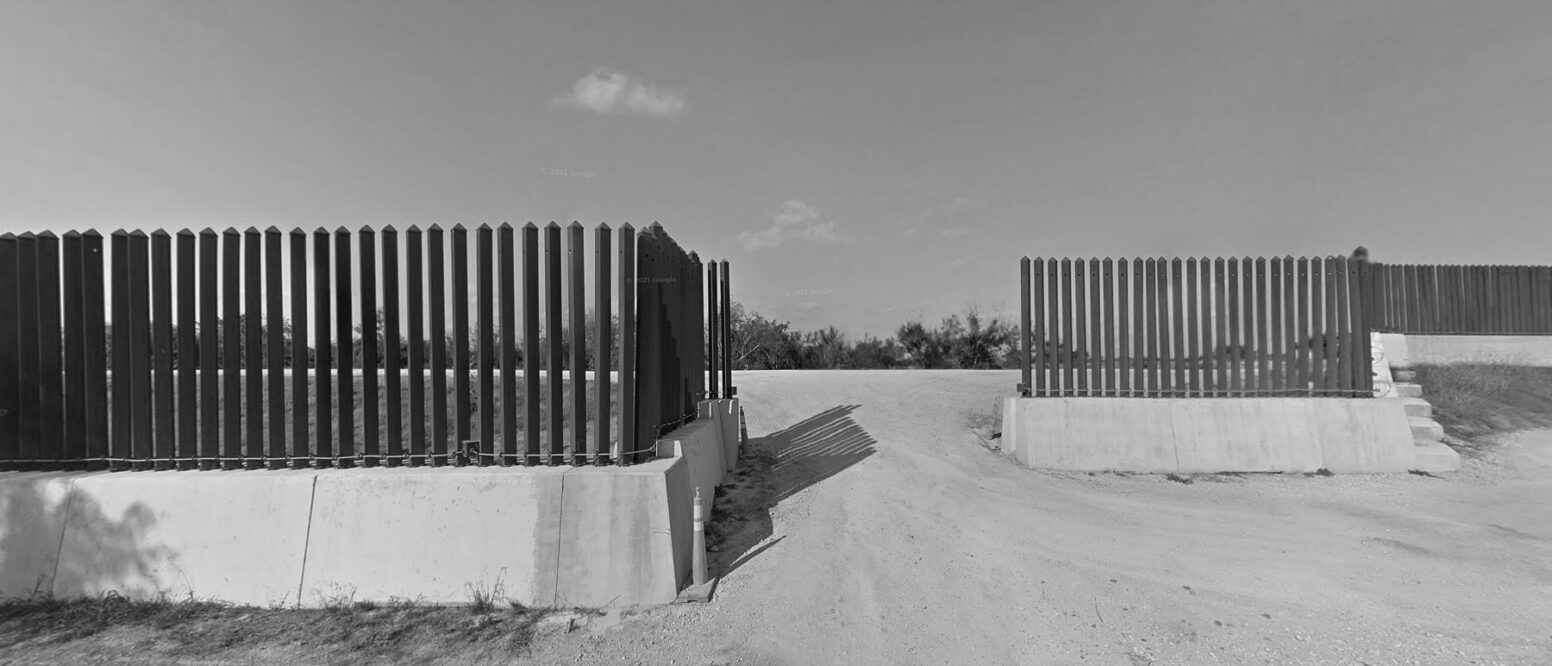
Brownsville, Texas (June 2011). Zigzag folds along the border fence.
“I always say, it’s a fourth-century solution to a twenty-first-century problem.” — Will Hurd, Republican Congressman from Texas’ 23rd district, interviewed about the border wall
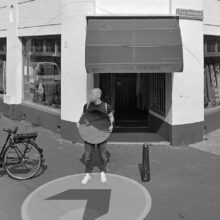 Nicola Moscelli (Taranto, 1980) is a photographer and documentarist based in the Netherlands and Italy. Using his own photographs as well as archival material, he creates visual narratives focused on the environment from an anthropological perspective, with the aim of analyzing its identity, historical and cultural legacies. His works have been published on platforms such as Urbanautica, Der Greif (Guest-Room curated by Christof Wiesner & Aurélien Valette), Fotograf Magazine, Discorsi Fotografici, and C41 Magazine. ‘Dead End’ is his first long-term visual project, soon to be published as a book by Penisola Edizioni.
Nicola Moscelli (Taranto, 1980) is a photographer and documentarist based in the Netherlands and Italy. Using his own photographs as well as archival material, he creates visual narratives focused on the environment from an anthropological perspective, with the aim of analyzing its identity, historical and cultural legacies. His works have been published on platforms such as Urbanautica, Der Greif (Guest-Room curated by Christof Wiesner & Aurélien Valette), Fotograf Magazine, Discorsi Fotografici, and C41 Magazine. ‘Dead End’ is his first long-term visual project, soon to be published as a book by Penisola Edizioni.


